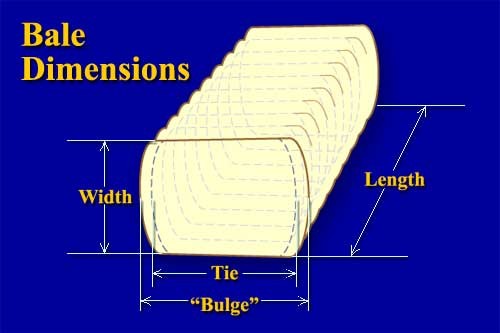Cotton Bale Definition and Production

A cotton bale is defined as being refined cotton, packaged at a particular size, manageable for use by modern production methods. That is to say, a cotton bale is cotton which has been put through a cotton gin (engine) to remove the cotton fiber from seeds or any dirt and grime which may have accumulated in the raw plant during growth and harvest. There are different cotton plants which produce different grades and qualities of refined cotton fiber.
The different types of cotton are used for different projects. Some variations are great for clothing, underwear, t-shirts, or nicer outerwear. Some are better than others in being used to press the seeds for cooking oils. Still others provide structural support for rubber products such as car tires. Regardless of its intended purpose, these bales conform to uniform standards which allow for transport and further manufacturing process needs.
Nominal versus Actual Weight
To provide a direct answer to a direct question, a bale by law weighs 480 lbs. For people using the metric system, that’s 218 kilograms. The 480 figure is nominal, in reality, bales of cotton average a weight of 495 pounds, or 225 kilograms. The extra weight allows for humidity and moisture which may have accumulated to dry out, and to assure the recipient of the product receives what they paid for. Cotton is typically grown in climates which are hot, humid, and generally wet during the growing season, and crops can vary annually based on rainfall during the dry months. Regardless of what might happen on the farm each year, the final product is going to be a bale ready for factory production usage, and it’s going to weigh 480 lbs., or maybe a little more in actual weight.
Cotton Bale Size by Volume
Volume is another consideration of cotton size. Bales are defined by law as being 55 inches long, 21 inches tall, and 33 inches wide. Cotton isn’t a factory-produced iron or plastic, such measurements can’t be guaranteed as absolute, but each bale is going to be within an inch of such measurements to assure efficient packaging and transport. The purpose of baling cotton is to compress it for storage and transport until later use.

The Worth of Cotton and Pricing
Cotton as an investment can be either risky or profitable, depending on one’s understanding of the market. Farmers seem to understand the market intuitively as if they know what the weather is going to be each season, and grow their crops accordingly. Pricing fluctuates each year according to supply and demand economics. Pricing it at around 80 cents per pound comes out at $384 per bale. That price has been much lower over the past few years, as low as 60 cents per pound, but is expected to jump up over the 2021 and 2022 growth seasons.
It’s a consumer-driven market. When the economy is tight and people aren’t spending, the price of cotton falls. In turn, production falls, until the need for these products exceeds the production levels. Then, the demand for cotton resumes and cotton sales skyrocket as prices go up and farmers strive to meet the demand. The cotton market may be driven by the rules of supply and demand, yet the size of a bale of cotton remains constant as an international standard which defines how much cotton is being purchased at the current rates.
